This recipe for keto cottage cheese cheesecake is a creamy baked cheesecake for a delicious dessert. Made with a creamy blend of cottage cheese and sour cream it's an easy recipe.
Using cottage cheese in place of cream cheese, this is a great healthy cheesecake to make when you run out of cream cheese. and is also a low carb high protein dessert.

Although not as creamy as a baked New York cheesecake, this low carb dessert would appeal to those who enjoy a baked firm cheesecake. Have fun playing with different flavors or add berries to the mixture before baking such as blueberries or raspberries.
This post may contain affiliate links. Please read my disclosure policy for more information.
Jump to:
Carbs in Cottage Cheese
Cottage cheese can be considered keto-friendly and is often included in ketogenic diets. It is a good source of protein and healthy fats while being relatively low in carbohydrates. Half a cup (approximately 113 grams) of full-fat cottage cheese typically contains around 4-5 grams of carbohydrates.
Cottage cheese is rich in protein, which is an essential macronutrient for maintaining muscle mass and supporting overall health. The protein content in cottage cheese can vary, but it generally provides about 12-15 grams of protein per half-cup serving.
When incorporating cottage cheese into your keto diet, it's important to choose plain, unsweetened varieties to avoid any added sugars or unwanted carbs. It's always a good idea to check the nutrition label.
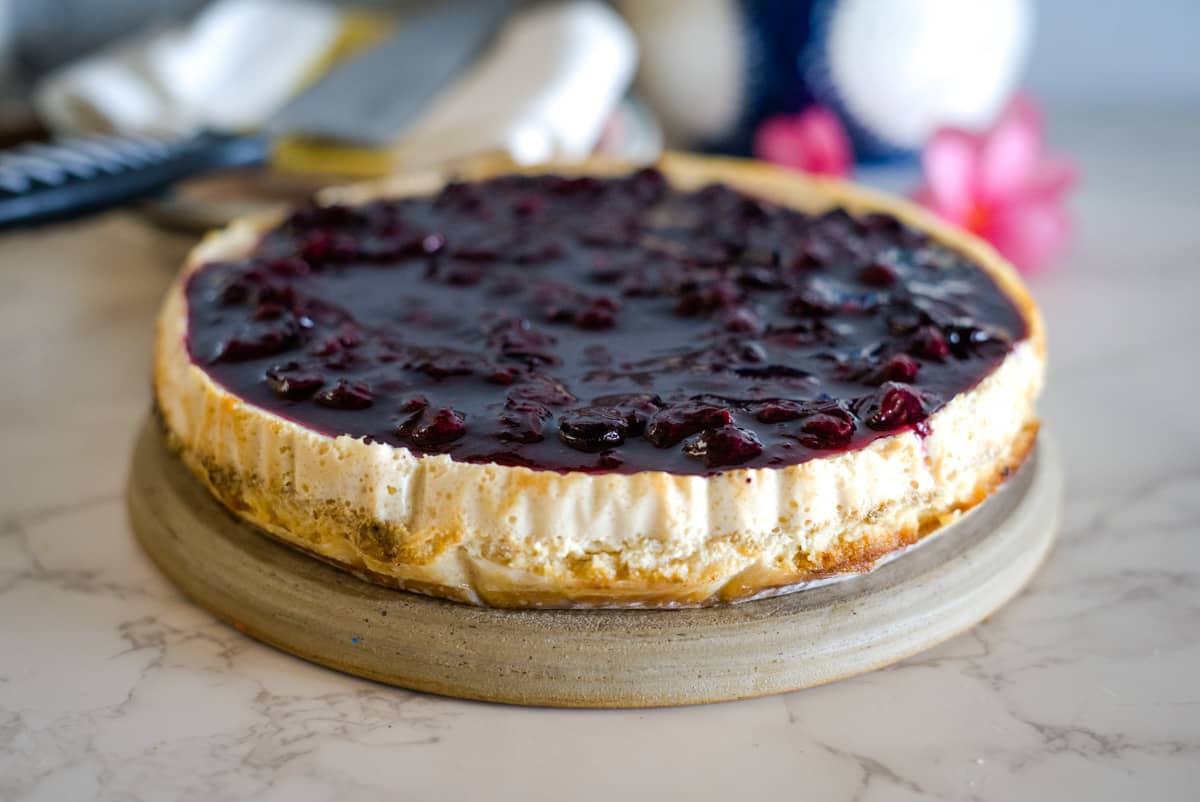
Cottage Cheese Protein
Cottage cheese is generally higher in protein than cream cheese. While the protein content can vary slightly depending on the brand and specific product, here is a general comparison of the protein content in cottage cheese versus cream cheese:
- Cottage Cheese: Half a cup (approximately 113 grams) of cottage cheese typically provides around 12-15 grams of protein.
- Cream Cheese: Half a cup (approximately 113 grams) of regular cream cheese typically contains around 4-6 grams of protein.
As you can see, cottage cheese generally has a higher protein content compared to cream cheese. This makes cottage cheese a favorable choice for individuals looking to increase their protein intake or those following a high-protein diet, such as the ketogenic diet.
However, it's important to note that cream cheese is higher in fat content compared to cottage cheese. Cream cheese is typically used for its creamy texture and flavor in various recipes, while cottage cheese is known for its curd-like texture and versatility in both sweet and savory dishes.
Ultimately, the choice between cottage cheese and cream cheese depends on your specific dietary needs, preferences, and the intended use in a recipe.
Ingredients

- Almond flour - other low carb nut flours such as hazelnut or pecan could be substituted.
- Sweetener - we used monk fruit for the base and allulose for the cheesecake filling. The allulose dissolves well with no after crunchy taste. Any other low carb sweetener can be used.
- Sour cream - this could be replaced by Greek yogurt.
How to Make Cottage Cheese Cheesecake
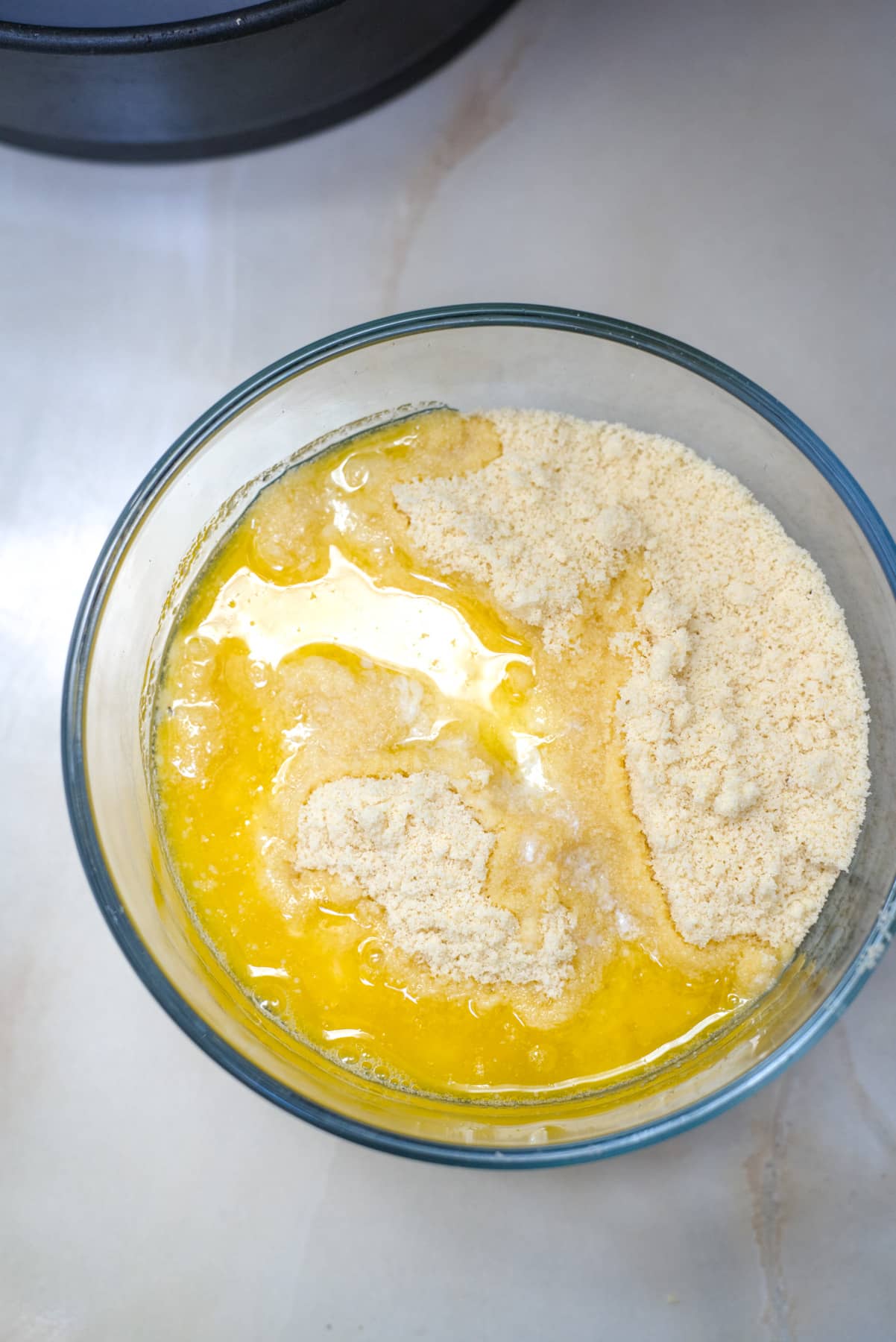
Mix almond flour, melted butter and sweetener in a bowl.
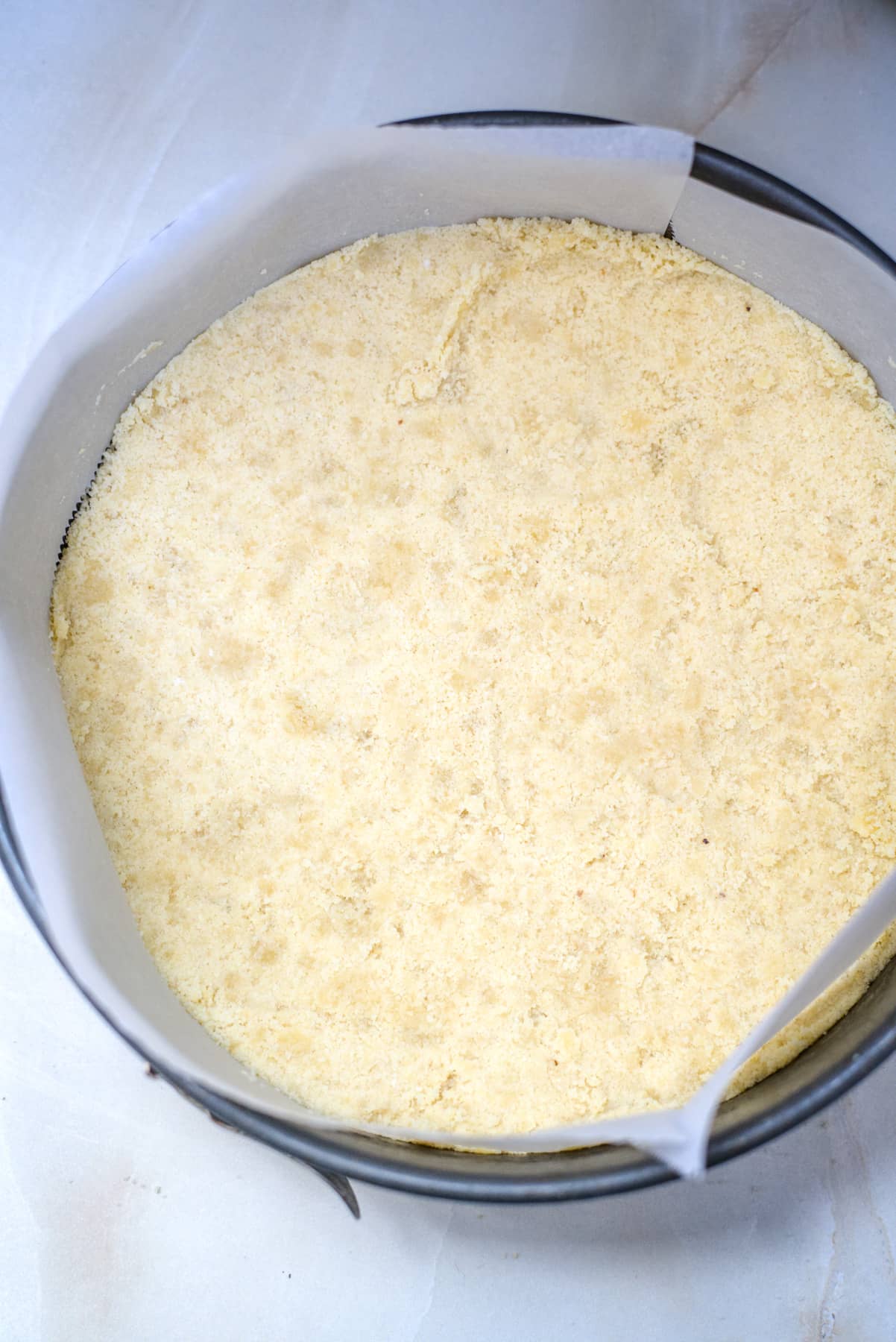
Press the mixture into a spring form pan
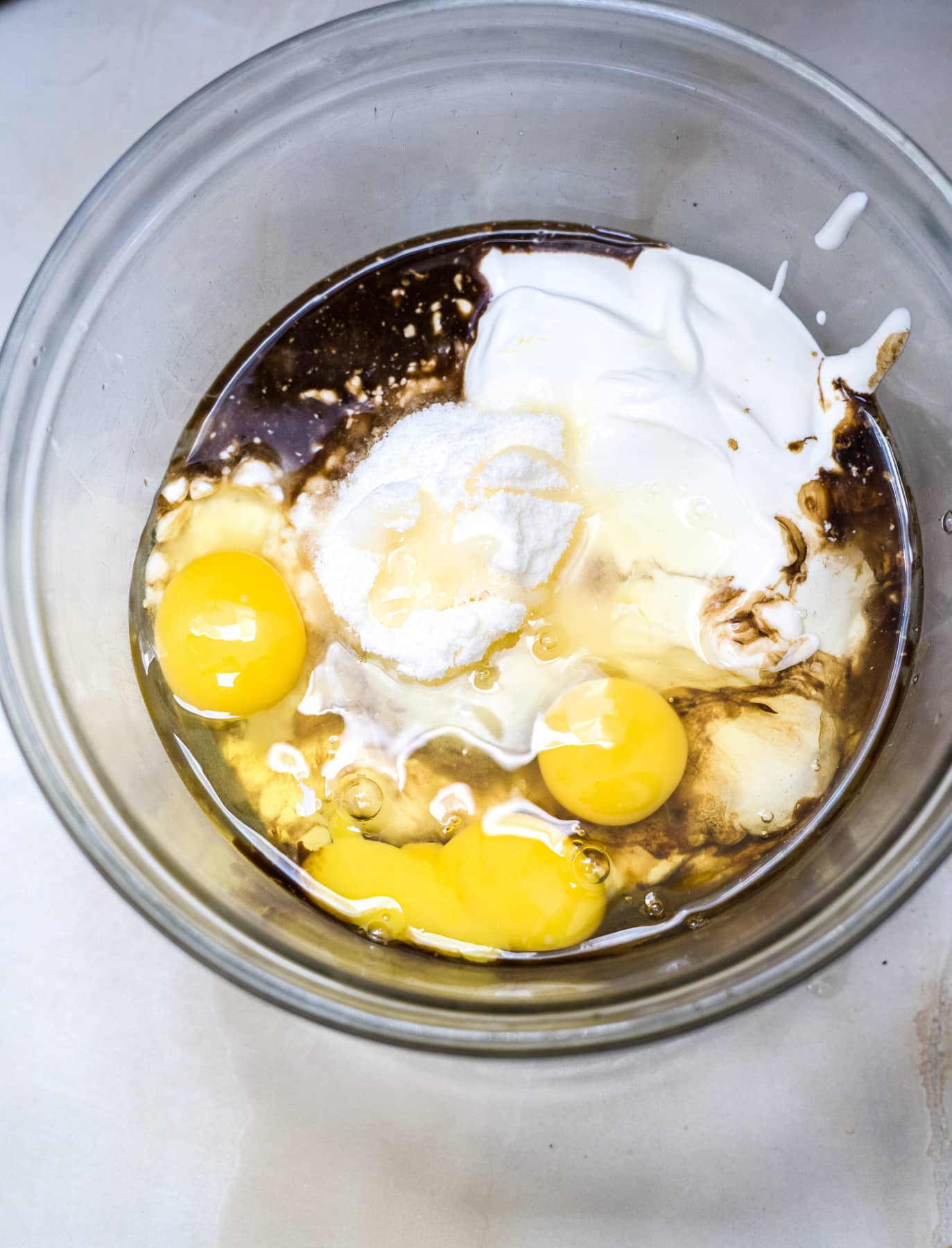
In a bowl mix the cottage cheese, sour cream, eggs, sweetener and vanilla.
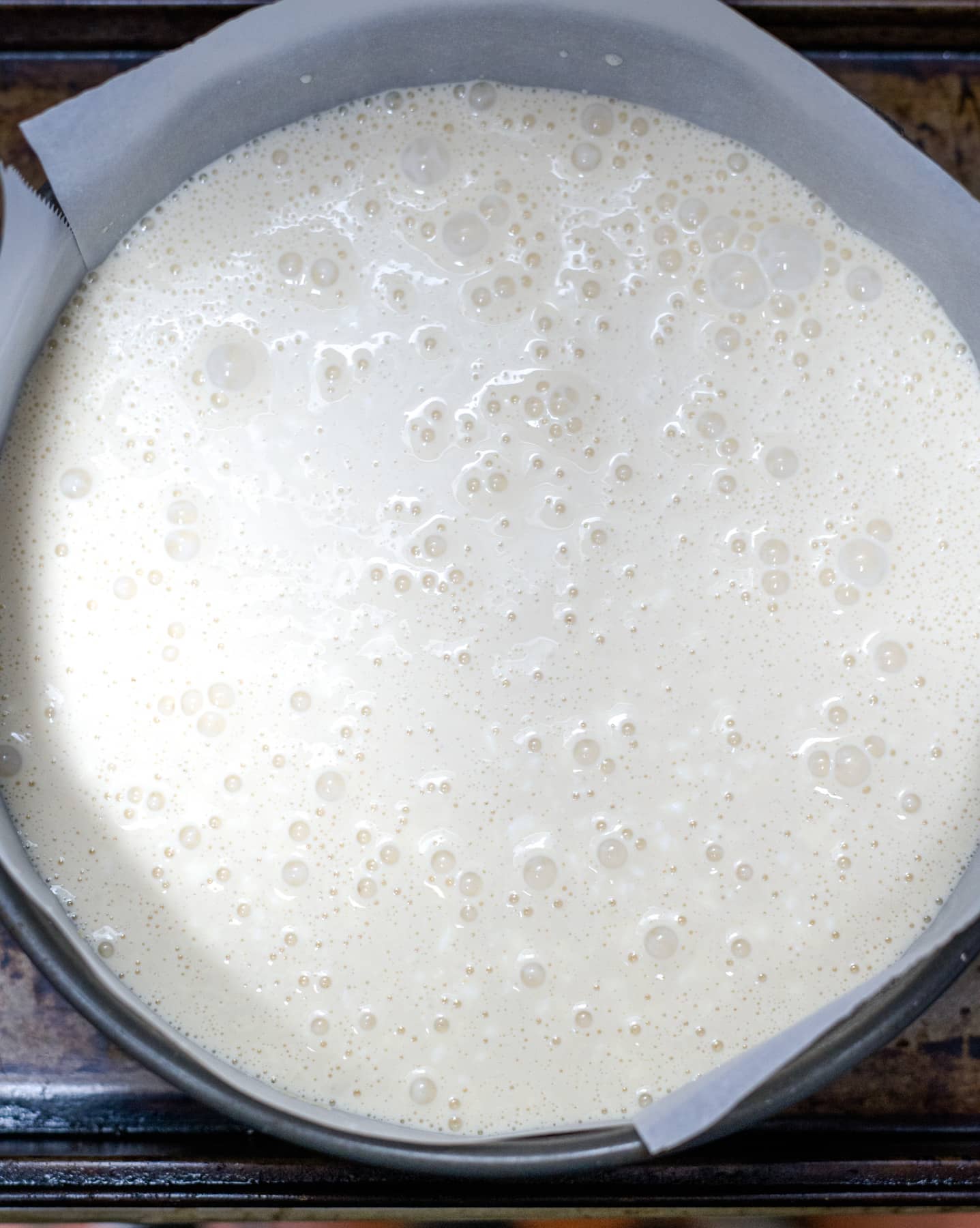
Pour the mixture on top of the base and bake.
Storage
Once baked and cooled, store this healthy cottage cheese cheesecake in the fridge and keep it in an airtight container. It should last up to 4 days.
Recipe Tips
To achieve a smoother texture, strain the cottage cheese before using it in the cheesecake. Line a fine-mesh sieve with cheesecloth or a coffee filter and let the cottage cheese drain in the refrigerator for a couple of hours or overnight.
After baking, let the cheesecake cool gradually to avoid drastic temperature changes that could cause cracking. Turn off the oven and leave the cheesecake inside with the oven door slightly ajar for about an hour. Then transfer it to a wire rack to cool completely before refrigerating.
Refrigerate the cheesecake for at least a few hours or overnight before serving. Chilling helps the cheesecake set and enhances the flavors. Serve it cold or at room temperature, as desired.
Topping Suggestions
This cheesecake is great served plain, just as a New York cheesecake is, but equally as tasty served with a topping.
We served ours with a sugar free blueberry sauce, but fresh berries or lemon curd topping are also a great choice.
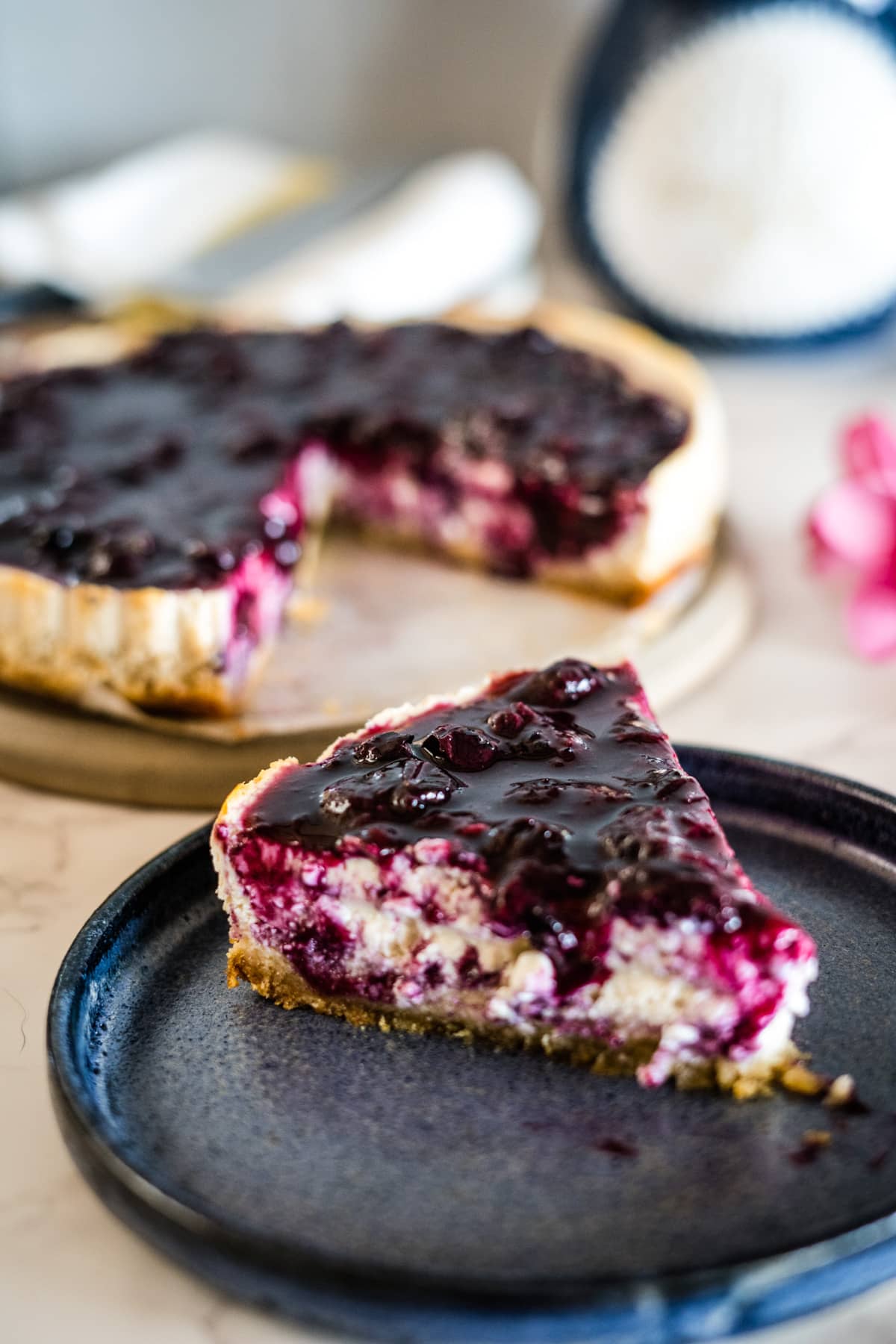
More Keto Cheesecake Recipes
Cheesecakes are an easy dessert to make keto with a few swaps. Enjoy these other keto cheesecake recipes:
Chocolate Cottage Cheese Cheesecake
No Bake Irish Cream Cheesecake
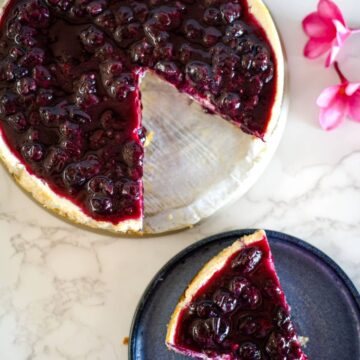
Cottage Cheese Cheesecake
Need Metric Measurements?
Use the button options below to toggle between US cups and Metric grams!
Ingredients
Cheesecake Base
- 2 cups almond flour
- 2 tablespoons melted butter
- 1 tablespoon monk fruit or other low carb sweetener
Cheesecake Filling
- 1 cup cottage cheese
- ⅔ cup sour cream
- ½ cup allulose or other low carb sweetener
- 3 large eggs
- 1 tablespoon lemon juice
- ½ teaspoon vanilla extract
Instructions
- Preheat your oven to 190C/ 375F degrees. Grease a 9-inch springform pan with butter or line the bottom with parchment paper.
- In a mixing bowl, combine the almond flour, melted butter and monk fruit for the crust. Stir until the mixture becomes crumbly and well combined.
- Press the crust mixture into the bottom of the prepared springform pan, ensuring it is evenly distributed. Use the back of a spoon or your fingertips to press it firmly.
- Place the tin in the fridge to chill whilst you prepare the cheesecake filling.
- In a large mixing bowl, add the cottage cheese, sour cream, vanilla, lemon juice, eggs and allulose. Whisk until smooth and combined.
- Alternatively, use a blender or food processor and blend until smooth and creamy, ensuring there are no lumps.
- Pour the filling over the cooled crust in the springform pan. Smooth out the top with a spatula to ensure an even surface.
- Bake the cheesecake in the preheated oven for approximately 40-45 minutes, or until the edges are set, and the center is slightly jiggly. Turn off the oven and leave the cheesecake inside with the door slightly ajar for about an hour.
- Remove the cheesecake from the oven and allow it to cool completely. Once cooled, cover the pan with plastic wrap and refrigerate for at least 4 hours, or preferably overnight, to set.
- When ready to serve, carefully remove the sides of the springform pan. Add toppings if you wish. Slice the cheesecake into individual servings and enjoy!
Notes
Nutrition
The information shown is an estimate provided by an online nutrition calculator.


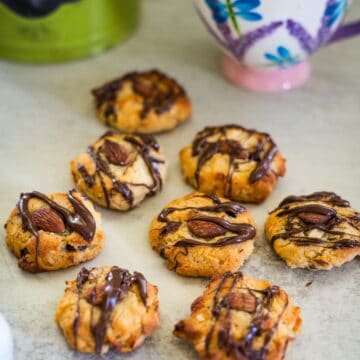
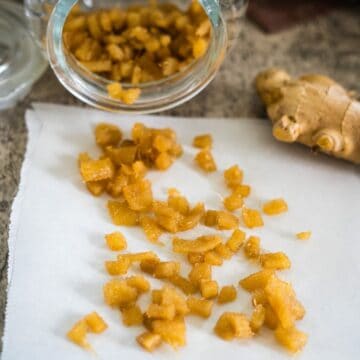
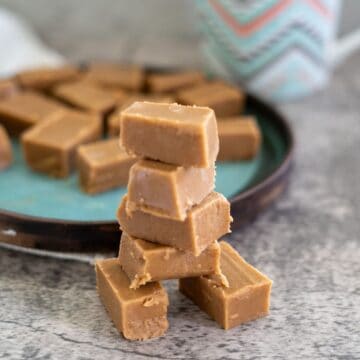
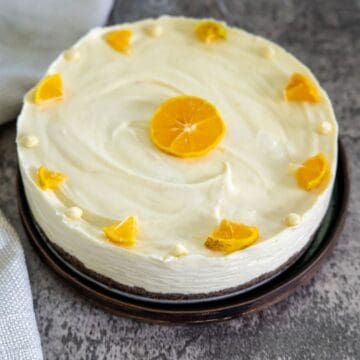
Leave a Reply